Tips on using letterhead
Use letterhead designed specifically for laser printers.
Print a test page on the letterhead being considered for use before buying large quantities.
Before loading letterhead, flex, fan, and straighten the stacks to prevent sheets from sticking together.
Page orientation is important when printing on letterhead.
Source
Printing
Printable side
Paper orientation
Note: Check with the manufacturer or vendor to determine whether or not the preprinted letterhead is acceptable for laser printers.
Trays
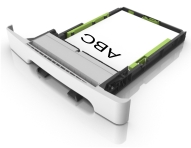
One-sided
Faceup
Load the sheet with the top edge entering the printer first.
Trays
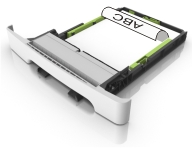
Two-sided
Facedown
Load the sheet with the bottom edge entering the printer first.
Manual feeder
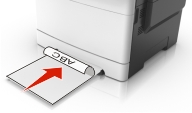
One-sided
Facedown
Load the sheet with the top edge entering the printer first.
Manual feeder
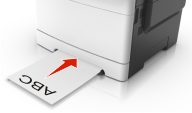
Two-sided
Faceup
Load the sheet with the bottom edge entering the printer first.
Multipurpose feeder
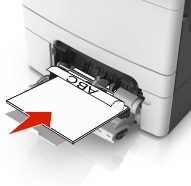
One-sided
Facedown
Load the sheet with the top edge entering the printer first.
Multipurpose feeder
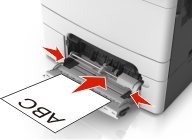
Two-sided
Faceup
Load the sheet with the bottom edge entering the printer first.